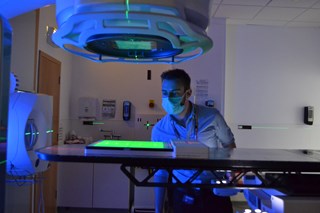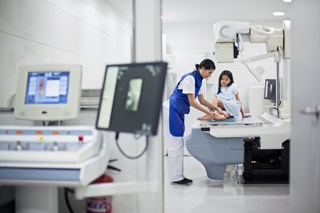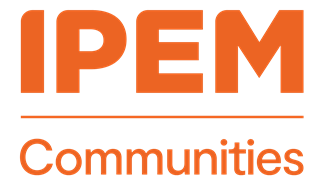We are IPEM
IPEM welcomes everyone with a professional interest in medical physics and clinical engineering.
Meet some of our individual members.
Dr Kate Bryant, IPEM Full member
Consultant Clinical Scientist, Head of Non-ionising Radiation, Medical Physics & Clinical Engineering Department, Cardiff and Vale University Health Board.
Honorary Associate Professor, Faculty of Medicine, Health and Life Science, Swansea University.

Tell us about a typical work day, what is your role and what does it involve?
I am a Consultant Clinical Scientist in Non-Ionising Radiation, Head of the Non-Ionising Radiation Section and Deputy Director of Medical Physics and Clinical Engineering.
A typical day is a mix of performing patient scans at vascular clinics, performing LPA laser safety audits, or lecturing at Cardiff University, alongside service and workforce management.
I’m Chair of the Welsh Scientific Advisory Committee (WSAC) Medical Physics and Clinical Engineering Sub-Committee (Vice-chair 2019-2023), and a member of WSAC. I’m also member of the Radiation Protection Standing Specialist Advisory Group. (Chair 2018-2020, vice-chair 2016-2018), reporting into WSAC.

What's the best thing about your job? which elements of your job do you like the most?
My favourite aspect of my role is working directly with patients within a multidisciplinary clinical team, directly contributing to patient care.

What are the biggest challenges you see – either for yourself or the sector?
The use of ultrasound and lasers is rapidly expanding throughout healthcare, and it is important that our non-ionising medical physics workforce can grow with the demands.

If you could change one thing about the profession or your area of specialty, what would it be and why?
I would make Vascular ultrasound STP training available within medical physics. The removal of Doppler ultrasound from the medical physics Clinical Scientist Training programme has posed significant challenges in training and maintaining the medical physics workforce in Doppler ultrasound.

What accomplishment have you been most proud of in your career?
Completing my PhD part time in three years, alongside my Part II IPEM higher training, working full time in my Band 7 Clinical Scientist role, was an achievement at the start of my career.
More recently, leading my team and service through the pandemic and receiving the IPEM President's Gold Medal Award for Exceptional Service during the Covid 19 pandemic.

Why did you join IPEM and how do you engage with the Institute?
I joined IPEM as an Associate Member when I first started my IPEM Grade A training. I was supported through my training, becoming a Member of IPEM on completion of my Part II higher training.
I was a member of the IPEM Physiological Measurement Special Interest Group (2013-2016), and I contributed to the STP guidance notes for STP trainees, published by IPEM.
In 2013 I was nominated as an IPEM Member of the Academy for Healthcare Science (AHCS) Medical Physics Professional Group, involved with setting the training standards for the STP equivalence route. I’m now an assessor for AHCS STP equivalence, and assessor for the Association of Clinical Scientists (ACS) Route 2 Clinical Scientist equivalence applications.
I was a Member of the Royal College of Radiology First FRCR Examination Committee (2013-2019), setting the syllabus, examination and pass standards for Part 1 Radiology SpRs. I was awarded Honorary Membership of the Royal College of Radiology for my contribution to the College.
I’ve recently applied for IPEM Fellowship and would encourage anyone thinking of applying to do so.
I’ve recently been appointed as Joint IPEM Vice president for Wales, and I’m looking forward to the opportunities and challenges this role may bring.